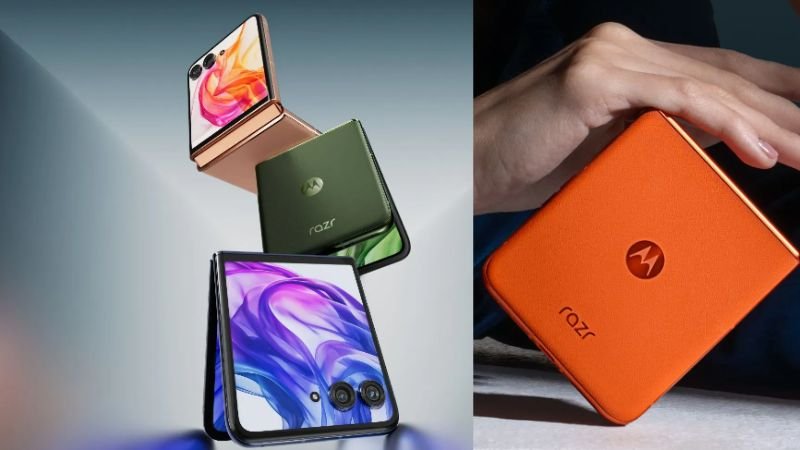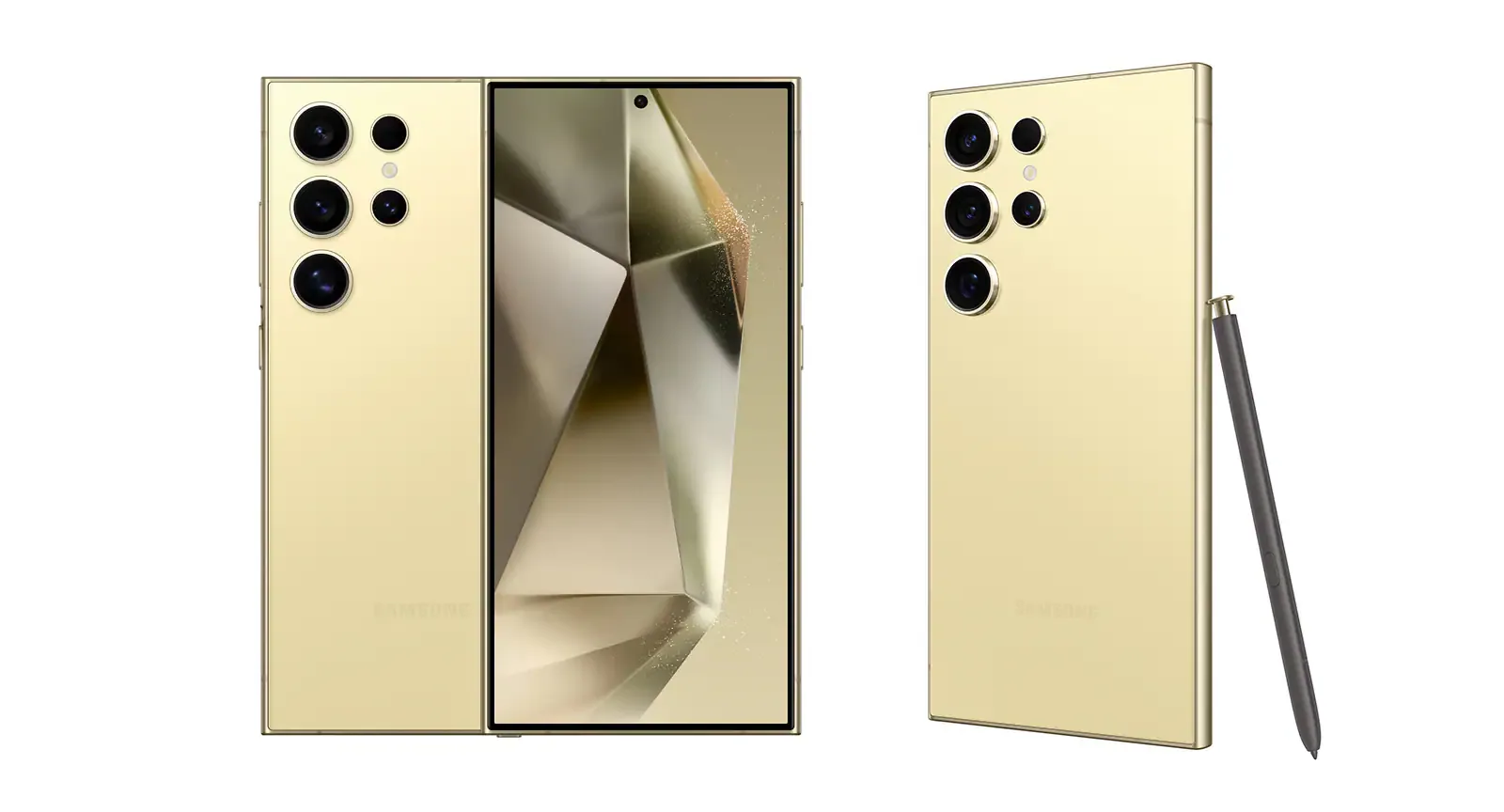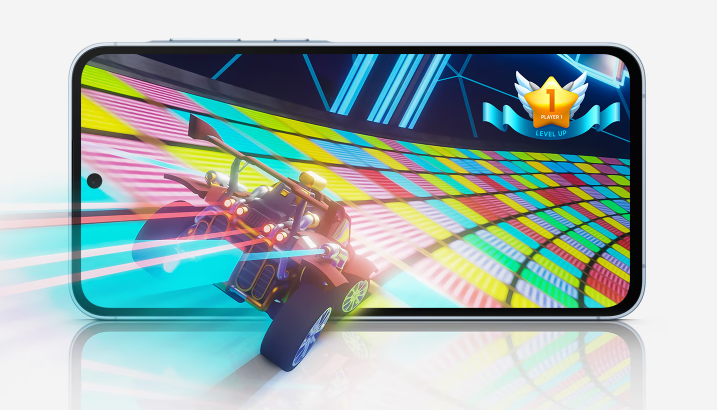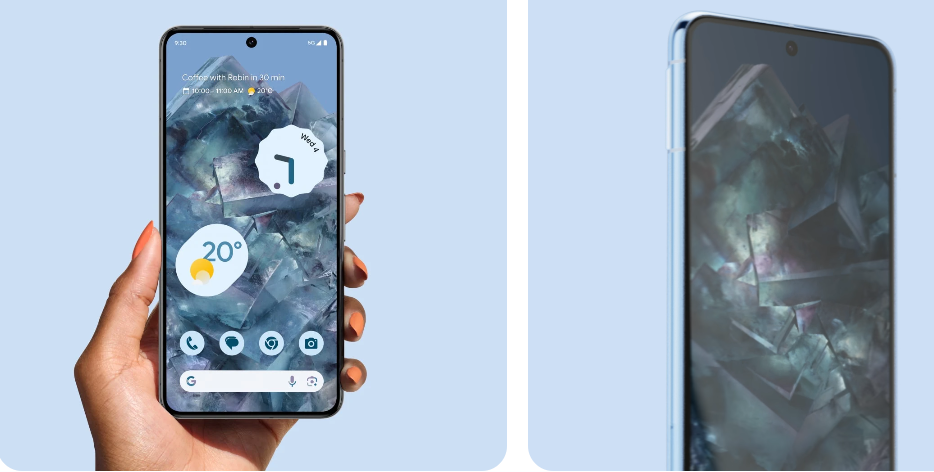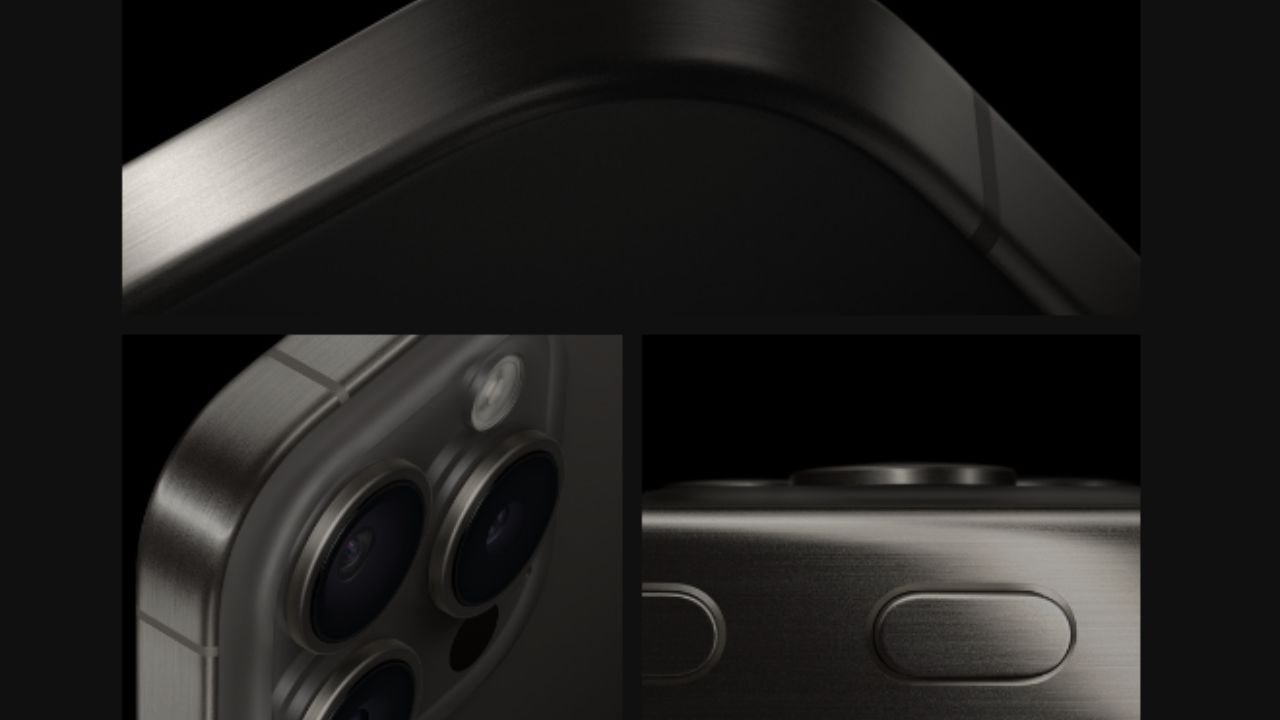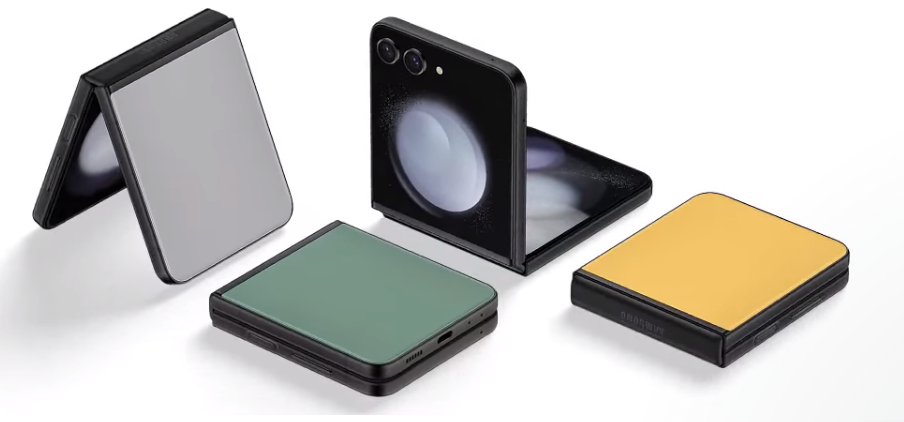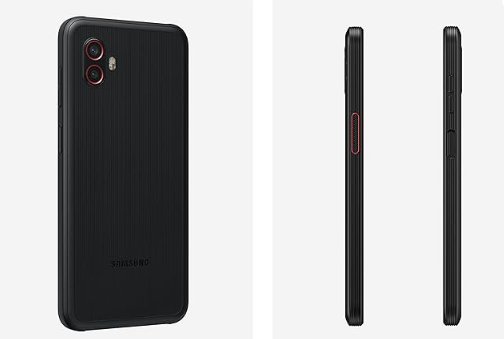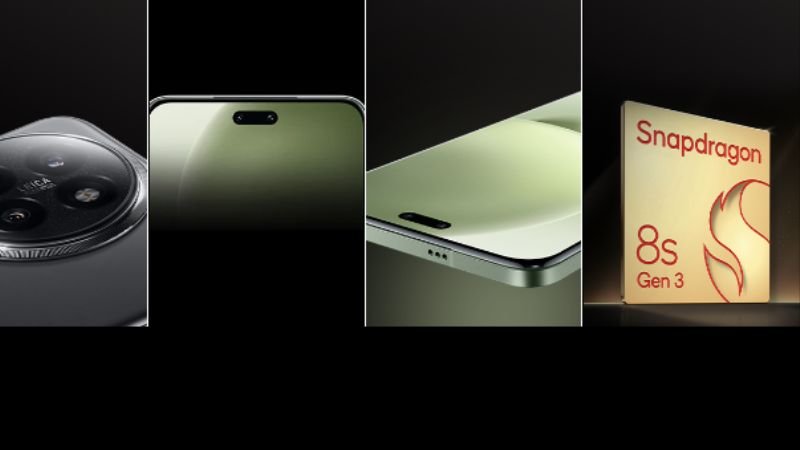The Motorola Razr 2024 stands out as one of the most captivating smartphone designs this year, diverging from the current trend of focusing solely on internal technology advancements like AI. Unlike its contemporaries, the Razr Plus 2024 (also known as the Moto Razr 50 Ultra in some regions) and the Moto Razr 2024 (or Razr 50) prioritize a striking external aesthetic coupled with an exceptional mobile experience.
Motorola continues to lead the charge in delivering a handset that not only performs well but also turns heads with its innovative flip design.
Motorola Razr 2024 Review
Reflecting on its heritage from the iconic Motorola RAZR V3, which debuted two decades ago, the new Razr retains a sense of nostalgia while embracing modernity in its foldable OLED display. Surprisingly, the Razr houses one of the largest screens available on any smartphone, boasting a spacious 6.9-inch interior display.
For comparison, the Galaxy S24 Ultra, known for its size, features a slightly smaller 6.8-inch display. Additionally, the Razr incorporates a secondary exterior screen that serves more than just a cosmetic purpose. Unlike other flip phones’ token displays, this secondary screen supports full app functionality, enhancing usability and versatility.

The cover display, which debuted on the Motorola Razr Plus 2023, has undergone significant improvements in the Razr Plus 2024. It now stretches closer to the edges with minimal bezels, providing an expansive viewing experience for apps and notifications alike. Motorola continues its tradition of offering vibrant color options, including bright orange, peach, hot pink, and earth tones, catering to varied style preferences.
While the allure of a flip phone may command a higher price tag compared to conventional candy bar designs, the Razr’s unique blend of style and functionality justifies its premium. Motorola’s track record of offering discounts on previous Razr models suggests potential savings in the near future for those who are patient.
Whether you’re captivated by its aesthetic charm or intrigued by its dual-screen innovation, the Motorola Razr 2024 remains a compelling choice in the competitive smartphone landscape.
Here’s a detailed comparison of the Motorola Razr 2024 models, highlighting their prices, specifications, and key features:
Motorola Razr 2024 Review Specs
| Feature | Motorola Razr Plus (Razr 50 Ultra) 2024 | Motorola Razr (Razr 50) 2024 |
|---|---|---|
| Price | $999.99 / £999 / AU$1,699 | $699.99 / £799 / AU$999 |
| Dimensions (open) | 73.99 x 171.42 x 7.09mm | 73.99 x 171.30 x 7.25mm |
| Dimensions (closed) | 73.99 x 88.09 x 15.32mm | 73.99 x 88.08 x 15.85mm |
| Weight | 189g | 188g |
| Screen size (Internal/External) | 6.9-inch foldable / 4-inch | 6.9-inch foldable / 3.6-inch |
| Screen resolution (Internal/External) | 2640 x 1080 / 1272 x 1080 | 2640 x 1080 / 1056 x 1066 |
| Screen peak brightness (Internal/External) | 3,000 / 2,400 nits | 3,000 / 1,700 nits |
| Refresh rate (Internal/External) | 165Hz / 165Hz | 120Hz / 90Hz |
| Chipset | Qualcomm Snapdragon 8s Gen 3 | MediaTek Dimensity 7300X |
| RAM | 12GB LPDDR5X | 8GB LPDDR4X |
| Storage | 256GB UFS 4.0 | 256GB UFS 2.2 |
| OS | Android 14 | Android 14 |
| Rear Cameras | 50MP (f/1.7, 0.8μm); 50MP 2X lens (f/2.0, 0.64um) | 50MP (f/1.7, 0.8μm); 13MP (f/2.2, 1.12μm) ultra wide |
| Front Camera | 32MP (f/2.4, 0.7μm) | 32MP (f/2.4, 0.7μm) |
| Battery | 4,000mAh | 4,200mAh |
| Charging | 45W wired, 15W wireless, 5W reverse wireless | 30W wired, 15W wireless |
| Colors | Midnight Blue, Spring Green, Peach Fuzz, Hot Pink | Koala Grey, Beach Sand, Spritz Orange |
The Motorola Razr Plus (Razr 50 Ultra) 2024 is positioned as the higher-end model with a larger external display, higher refresh rates, superior chipset, more RAM, and faster charging capabilities. In contrast, the Motorola Razr (Razr 50) 2024 offers a more affordable option with slightly scaled-down specifications but still boasts impressive features like a foldable OLED display and high-resolution cameras.

These devices cater to users looking for cutting-edge foldable technology with varying degrees of performance and pricing, catering to different preferences and budgets in the smartphone market.
Here’s an elaborated rewrite covering all the aspects mentioned:
Motorola Razr 2024 Hands-On: Design
As I approached the unveiling of the new Motorola Razr 2024 and Motorola Razr Plus 2024, my foremost curiosity centered around one burning question: what captivating colors would Moto offer this time? Reflecting on last year’s introduction of the Razr Plus in the Pantone color of the year, Viva Magenta, followed swiftly by the Fuzzy Peach model for 2024, Motorola has certainly carved out a stylish niche for its Razr lineup. Beyond mere specs and features, I anticipated witnessing something truly distinctive.
Motorola did not disappoint in the realm of aesthetics. Impressively, they managed to enhance everything about the already remarkable Razr while addressing some of the original model’s shortcomings, notably in the camera department.
Let’s delve into the colors first, as Motorola has clearly embraced a vibrant and colorful identity that resonates with its Razr audience. The Razr Plus 2024 arrives in Peach Fuzz, a shade that appears even more vivid on the new device compared to its predecessor. Additionally, there’s Midnight Blue, Spring Green, and a throwback Hot Pink that channels the nostalgic Barbie-core fashion era.
The standard Razr 2024 also boasts some eye-catching options, including the striking Spritz Orange, the subdued Koala Grey, and the beach-inspired Beach Sand—each complementing Motorola’s choice of vegan leather exceptionally well. Speaking of which, Motorola has fully embraced vegan leather across the latest Razr family, eschewing traditional glass backs for a textured finish that feels luxurious to the touch. It’s a smart move, not just aesthetically pleasing but also aligning with ethical considerations by avoiding animal-derived materials and certain chemicals associated with leather production. However, it’s worth noting that while vegan leather may appeal to ethical sensibilities, it isn’t inherently eco-friendly due to its petroleum-based composition.
Moving beyond colors and materials, the design of the Motorola Razr has undergone significant improvements. The external display, a standout feature of the original Razr Plus, has been further enlarged and enhanced, surpassing the capabilities of competitors like Samsung’s Galaxy Z Flip 5 in both size and functionality. This upgrade in the Razr Plus 2024 and Razr 2024 promises a more immersive and practical user experience.
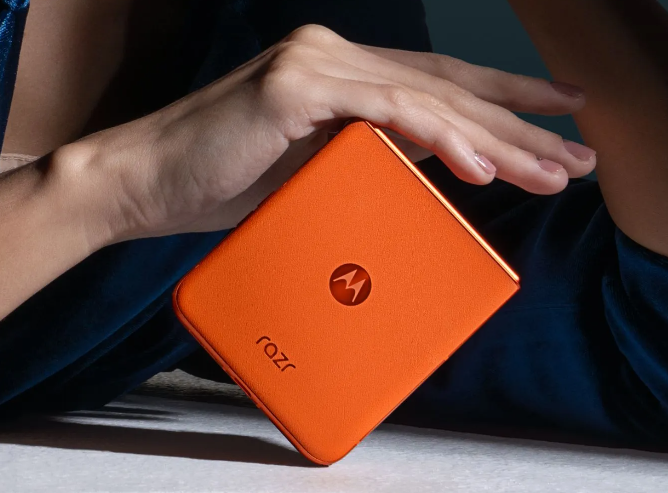
In conclusion, Motorola has not only maintained its reputation for delivering stylish and innovative foldable smartphones but has also raised the bar with thoughtful enhancements across design, materials, and display technology in the Razr 2024 series.
Motorola Razr 2024 Hands-On: Display
The Motorola Razr Plus 2024 introduces a remarkable evolution in its cover display, stretching it edge-to-edge for an immersive experience that truly stands out. While its predecessor, the Razr Plus, impressed with its large external screen, the new Razr Plus takes a significant leap forward. In fact, the design innovation is so striking that it prompted me to inquire whether Motorola might consider releasing a phone solely based on the size of the Razr Plus’s cover display, reminiscent of the old Moto FlipOut. Their positive response hinted at future possibilities.
Even the base model Razr has shed its previous limitations with the cover display. The Razr 2023 featured a modest mail slot window, functional yet compact. In contrast, the Motorola Razr 2024 boasts a 3.6-inch cover screen, matching the diagonal size of its predecessor, the Moto Razr Plus 2023. While I intend to conduct a side-by-side comparison to confirm exact dimensions, the latest model’s cover display appears generously sized, adorned with a vibrant bezel at the top instead of filling the space entirely with pixels.
What sets the Razr’s cover display apart is Motorola’s expansive approach to app integration. Unlike Samsung’s Galaxy Z Flip 5, which imposes stricter limitations, Motorola provides users with a versatile secondary screen that can accommodate a wide range of Android apps. According to Moto, this year’s models have enhanced capabilities, including dedicated cover screens for apps like Google Photos and Spotify. I look forward to thoroughly testing these enhancements to gauge their practical impact, though initial impressions suggest that Motorola has refined an already compelling feature set.
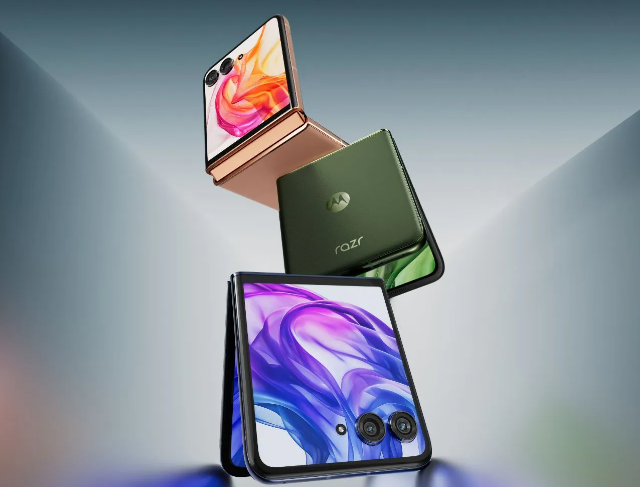
In summary, the Motorola Razr 2024 series not only enhances the user experience with its expansive cover display but also underscores Motorola’s commitment to innovation and usability in the foldable smartphone market.
Motorola Razr 2024 Hands-On: Cameras
One of the key areas of improvement I was eager to explore on the Motorola Razr 2024 series was its cameras. Foldable phones inherently face challenges with camera performance due to their slim form factor, which limits space for camera components compared to traditional candy bar-style phones. Devices like the OnePlus Open compensate with prominent camera bumps, but Motorola has taken a different approach with the Razr Plus and Razr 2024.
On paper, the Razr Plus has made a significant leap, upgrading from a 12MP to a 50MP sensor. While this increase in resolution appears impressive, it’s important to note that the individual pixel size has decreased—from 1.4µm on last year’s model to just 0.8µm on the current iteration. In photography, larger pixels generally lead to better image quality, so Moto employs pixel-binning on the Razr Plus, combining pixels to effectively create a 12.6MP image with larger 1.6μm pixels. This technique aims to improve low-light performance and overall image quality, though real-world testing will determine its effectiveness.
Instead of opting for an ultra-wide lens, Motorola has chosen to include a 2X zoom on the Razr Plus 2024, a decision that enhances portrait photography by creating sharper subjects against a pleasingly blurred background.
For the Motorola Razr 2024, the camera setup appears less promising. The phone features a smaller sensor with lower pixel resolution compared to its predecessor, suggesting potential limitations in capturing detailed images. Detailed performance assessments through review testing will be crucial to evaluating any advancements over the previous model.
Historically, the camera has been the Achilles’ heel of Motorola’s Razr lineup. Personally, it’s been the primary reason why I haven’t adopted the Motorola Razr Plus 2023 as my daily Android device, despite appreciating its other features. The inadequacies in camera quality are a significant deterrent when a smartphone serves as one’s primary camera.
Motorola is leveraging AI to enhance its global camera capabilities, aligning with industry trends towards AI-powered smartphones. While the company has showcased upcoming AI features, initial offerings at launch will leverage established technologies from Google, promising familiar enhancements in photo processing and computational photography.
In conclusion, while the Motorola Razr 2024 series shows promising strides in camera technology, particularly with the Razr Plus model, comprehensive review testing will be essential to ascertain its real-world performance and determine if these improvements meet the expectations set by its competitors in the foldable phone market.
Motorola Razr 2024 Hands-On: Software
At the recent launch event for the Motorola Razr 2024, the focus on artificial intelligence (AI) was unmistakable, marking a clear divide in the company’s approach. Motorola has secured access to Google’s advanced Android AI features, including Google’s Gemini large language model, which will run on the Razr Plus 2024 powered by Qualcomm’s Snapdragon 8s Gen 3 chipset—a slightly scaled-down version of the Snapdragon 8 Gen 3, capable of handling robust on-device AI tasks. Notably, this makes the Motorola Razr Plus 2024 the first device equipped with this cutting-edge chipset.
Gemini will operate in the cloud on the Motorola Razr 2024, coming pre-installed on both new Razr models with an offer of three months of Gemini Advanced, which includes additional Google benefits like cloud storage. Users will have the option to opt-in to use Gemini instead of Google Assistant, promising enhanced voice command capabilities and contextual understanding.
The Motorola Razr 2024 leverages AI within its Camera app for scene optimization, a feature akin to Samsung’s Galaxy phones’ use of AI for astrophotography. This advancement allows the Razr to intelligently adapt to various shooting environments, potentially enhancing photo quality and user experience.
Regarding AI enhancements, Motorola clarified that any improvements in photo quality via AI, such as pixel-binning and exposure controls, will not alter images to the extent of necessitating a “Made with AI” label—a thoughtful consideration given the industry’s increasing reliance on AI for image processing.
Moreover, Motorola has integrated additional AI tools from Google, such as Photo Unblur and Magic Editor, surpassing features available even on Samsung’s latest Galaxy S24 lineup. While Google’s AI is widespread in productivity apps like Gmail, gaps exist in its integration across all user interfaces, unlike Samsung’s comprehensive AI keyboard integration.
Looking ahead, Motorola plans to supplement Google’s AI capabilities with its own Moto AI features, aiming to fill any existing gaps. The extent to which these plans are reactive to competitors like Apple’s AI advancements remains uncertain, with both companies continuously innovating in the AI space.
Motorola envisions a future where AI on the Razr goes beyond conventional smartphone functions, possibly incorporating AI-driven text and image generation akin to Apple’s Image Playground with its own Image Canvas feature. This aligns with broader industry trends where AI is increasingly embedded into daily smartphone interactions, from voice commands to content creation.
However, questions remain regarding the privacy and security implications of AI features that monitor and transcribe user conversations. While Motorola assures security measures, including local transcript creation before uploading for further processing, these capabilities are still in development, and their rollout will be closely monitored for compliance with privacy regulations.
Critically, Motorola has not provided a specific timeline for these AI features, prompting skepticism about their readiness amidst ongoing updates to Android versions and competitive advancements in the smartphone market.
In conclusion, while Motorola’s foray into AI with the Razr 2024 series showcases ambitious strides, the ultimate success of these innovations will hinge on robust testing and continued development to ensure seamless integration and user satisfaction. As the industry embraces AI-driven technologies, Motorola faces the challenge of balancing innovation with practical implementation, a delicate balance that will define its future in the evolving smartphone landscape.

The Motorola Razr continues to impress as a standout flip phone, enhanced this year with a larger cover display. However, there’s speculation whether Motorola may have pushed boundaries too far. While the expanded display is a welcome upgrade, the focus on AI features raises questions about necessity versus novelty. Historically, the Razr’s appeal rested on its iconic design rather than cutting-edge tech trends.
Pros:
- Vibrant Color Options: Offers a range of striking hues.
- Large Cover Display: Significant enhancement on both Razr models.
- Superior Flip Phone Software: Sets a benchmark in the industry.
Cons:
- Excessive AI Features: Uncertainty surrounds the practical utility.
- High Price Point: Pricey without promotional discounts.
- Unproven Cameras: Cameras remain a potential weak point.
In essence, while the Motorola Razr impresses with its aesthetic and functional updates, including a larger display, the focus on AI and the high cost may give potential buyers pause. The legacy of the Razr lies in its iconic design and solid flip phone experience, which might be its true strengths amid evolving technological trends.
Recommended For You:
Deal Alert: iPad Air with M1 Chip for $400 at Best Buy
Amazon Prime Member Deal: Nearly 50% Off the Fire HD 10 Tablet
Amazon Prime Day Apple Deals 2024: Early Deals and What to Expect
Get the Samsung Galaxy Watch 6 for $90 less, exclusively this week.
Realme GT 6 Review: Reliable Performance at an Affordable Price
OnePlus Ace 3 Pro Launched: Price, Specifications
Oppo Reno 12F 5G: Specifications
OnePlus Nord CE 4 Lite Review: Modern Display, Old Chipse
Samsung Galaxy F55 5G Review: A Sleek Midranger
Oppo Reno 10 Review: Affordable with a Few Drawbacks
Samsung Galaxy S24 Ultra review: What’s Ultra In It?
Google Pixel 8 Pro Review: Where the Smartphone Meets Reality
Honor 200 Pro Review: A Portrait Photography Powerhouse
Samsung Galaxy A55 Review: Elevating Mid-Range Standards
Samsung Galaxy A35 review | A Mid-Range Marvel
Best Foldable Phones in 2024: Samsung Galaxy Z Fold, Z Flip, Pixel Fold, Moto Razr
iPhone 15 Pro Max Review: Is It Worth It?
Bose QuietComfort Ultra Earbuds Review
Best Rugged Phones To Choose From
Vivo X100 Pro Review: The Real Camera Phone
